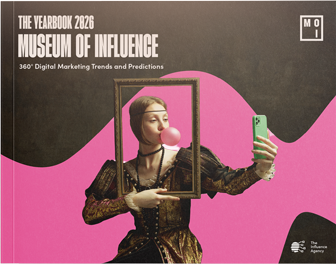Featured image:
Image alternative text:
Artificial intelligence is reshaping content creation. AI content generation tools enable efficient creation of various content types while maintaining brand voice and streamlining workflows.
Using AI for content creators is a competitive advantage, hands down. By experimenting with different AI prompts, teams can discover new approaches to content marketing, improve creative ideas, and accelerate the content creation process. Start exploring AI content creation tools today, refine your prompt engineering techniques, and integrate AI into your marketing campaigns to unlock higher productivity and more relevant content for your target audience.
Understanding AI content generation
AI content generation is more than a shortcut for marketers. It’s the application of artificial intelligence to produce text, images, video, and other assets at scale. Teams use these tools to shape blogs, social posts, product descriptions, and landing page copy, but the real shift is in how they enhance creativity and efficiency.
Powered by natural language processing (NLP) and machine learning (ML), AI platforms don’t just automate workflows. They reveal new angles, adapt tone for different audiences, and surface ideas that keep pace with cultural trends. In practice, this means content that feels timely, relevant, and tailored to the discovery engines and feeds where people actually engage.
Benefits for teams
AI supercharges the content process. It speeds up production of long-form articles, ad copy, and visuals without sacrificing quality. More importantly, it helps teams keep a consistent brand voice across every channel, from social feeds to blog hubs to campaign assets.
For marketers, AI also breaks through creative roadblocks. It sparks new angles, refines messaging for different audiences, and keeps content relevant in fast-moving digital spaces. The payoff is scale with substance: teams can produce more while ensuring every piece still resonates.
Prompt engineering techniques
Prompt engineering techniques are critical for getting high-quality output from AI content generation tools. Effective prompts guide AI models to produce relevant content and creative ideas.
Core principles of prompt engineering include clarity, context, constraints, and iteration. Clear prompts help AI content creation tools understand the task, while providing context, such as target audience, tone, or platform ensures more relevant content. Constraints like word count, format, or style keep AI-generated content aligned with brand voice. Iterating on prompts allows teams to fine-tune output and achieve better results in content creation workflows.
Best practices for effective prompts
Want to maximize AI content generation? Follow these best practices:
- Specify the role or persona for the AI, such as a social media manager or copywriter.
- Include detailed instructions about tone, style, and content format.
- Use structured prompts with bullet points, tables, or numbered lists to guide output.
- Test multiple variations of prompts to identify the most effective phrasing.
- Combine AI-generated content with human review to ensure quality, creativity, and brand consistency.
These prompt engineering techniques give teams more control over AI, enabling them to generate social posts, blogs, and ad copy at speed while still protecting brand voice and ensuring relevance across platforms.
Using AI tools for content creation
AI content tools give marketing teams the ability to produce blogs, social posts, video scripts, and ad copy with greater efficiency. When folded into existing workflows, they streamline production, spark new ideas, and help maintain a consistent brand voice at scale.
From conversational engines like ChatGPT to creative platforms like Jasper, GrammarlyGO, Writesonic, Notion AI, and Miro AI, these tools show how AI is becoming a backbone of modern campaigns across channels. Using well-crafted prompts ensures AI generates relevant content aligned with brand voice, campaign goals, and audience needs.
Prompt Type
Prompt Examples
Writing assistant prompts
Act as a social media manager. Write five Instagram captions for a sustainable fashion brand in a playful tone, each under 100 characters.
Generate an 800-word blog outline on AI content generation tools with H2 headings, key points, and examples for each section.
Creative content prompts
Create ten blog post ideas for a B2B SaaS company targeting marketing managers, focusing on AI content creation and efficiency.
Write a LinkedIn post highlighting a new product launch, using storytelling to engage readers and align with brand voice.
Brainstorming prompts
List 15 unique campaign angles for a product launch targeting Gen Z, emphasizing social trends and humor.
Generate a two-week social media content calendar for a wellness brand, including topics, captions, and hashtags.
Real examples of AI prompts that work
Teams across marketing, content, and design are already proving the value of AI prompts. Marketers use them to generate ad variations in minutes, creators to streamline blogs and video scripts, and designers to pair AI text with visuals for unified campaigns. The result is scale without dilution: campaigns move faster, brand voice stays intact, and content remains high-quality and relevant across every channel.
Lessons learned
- Be specific: Clear and detailed prompts lead to more accurate AI-generated content.
- Iterate: Testing multiple prompt variations improves output quality.
- Combine human review with AI: AI creates drafts; humans add creativity and context.
- Use AI tools strategically: Writing assistants and AI tools enhance content creation and workflows while preserving human creativity.
The future of AI prompts
AI prompts are reshaping the way content comes to life, whether it’s a blog post, a social update, or a video script. The future will belong to teams that master clear, context-rich prompts, the kind that turn AI from a tool into a true creative partner.
The takeaway is simple: experimentation drives advantage. Testing different prompts, iterating on what works, and folding those insights back into workflows saves time. It also sparks originality, adds depth, and gives campaigns the creative edge audiences notice.

